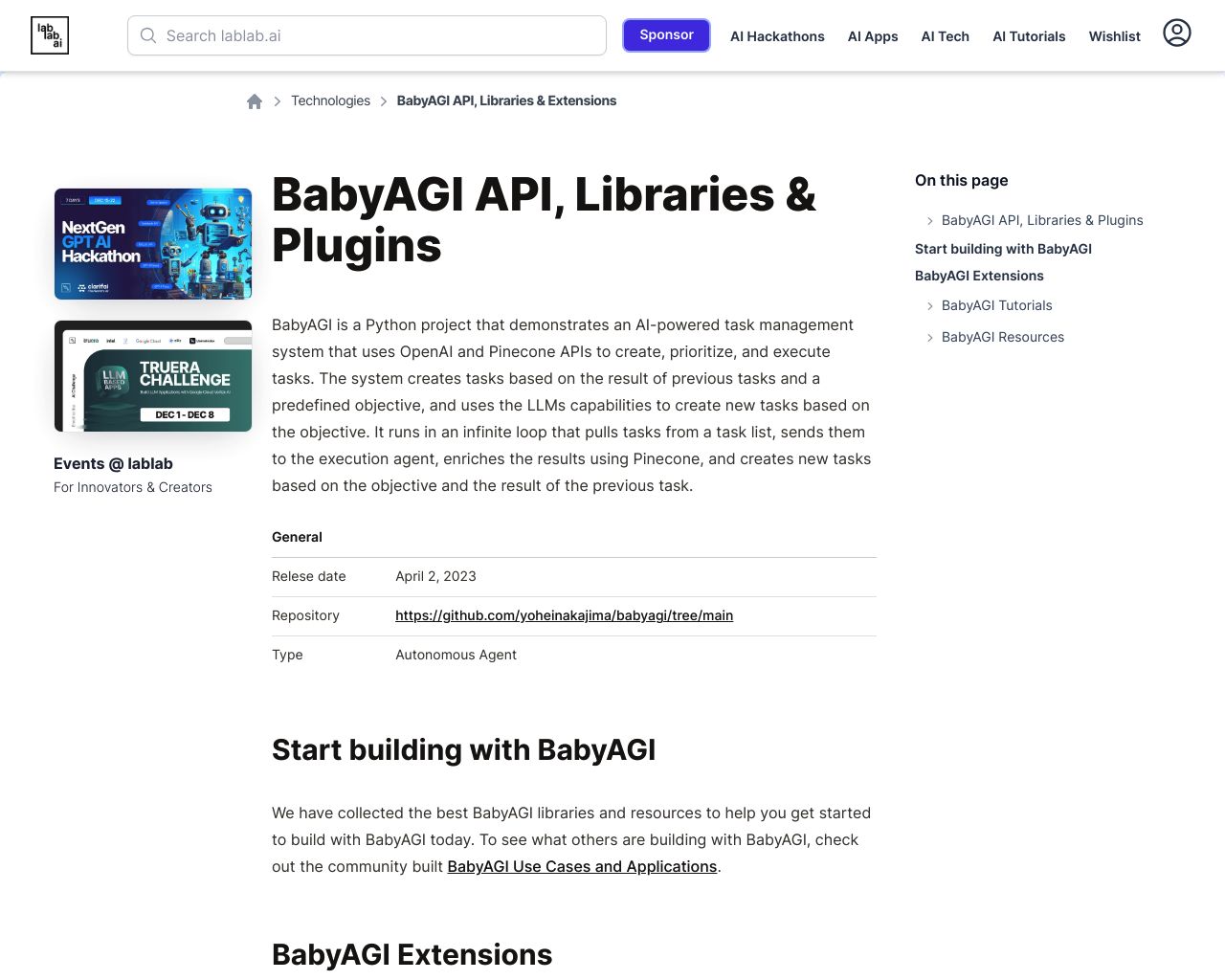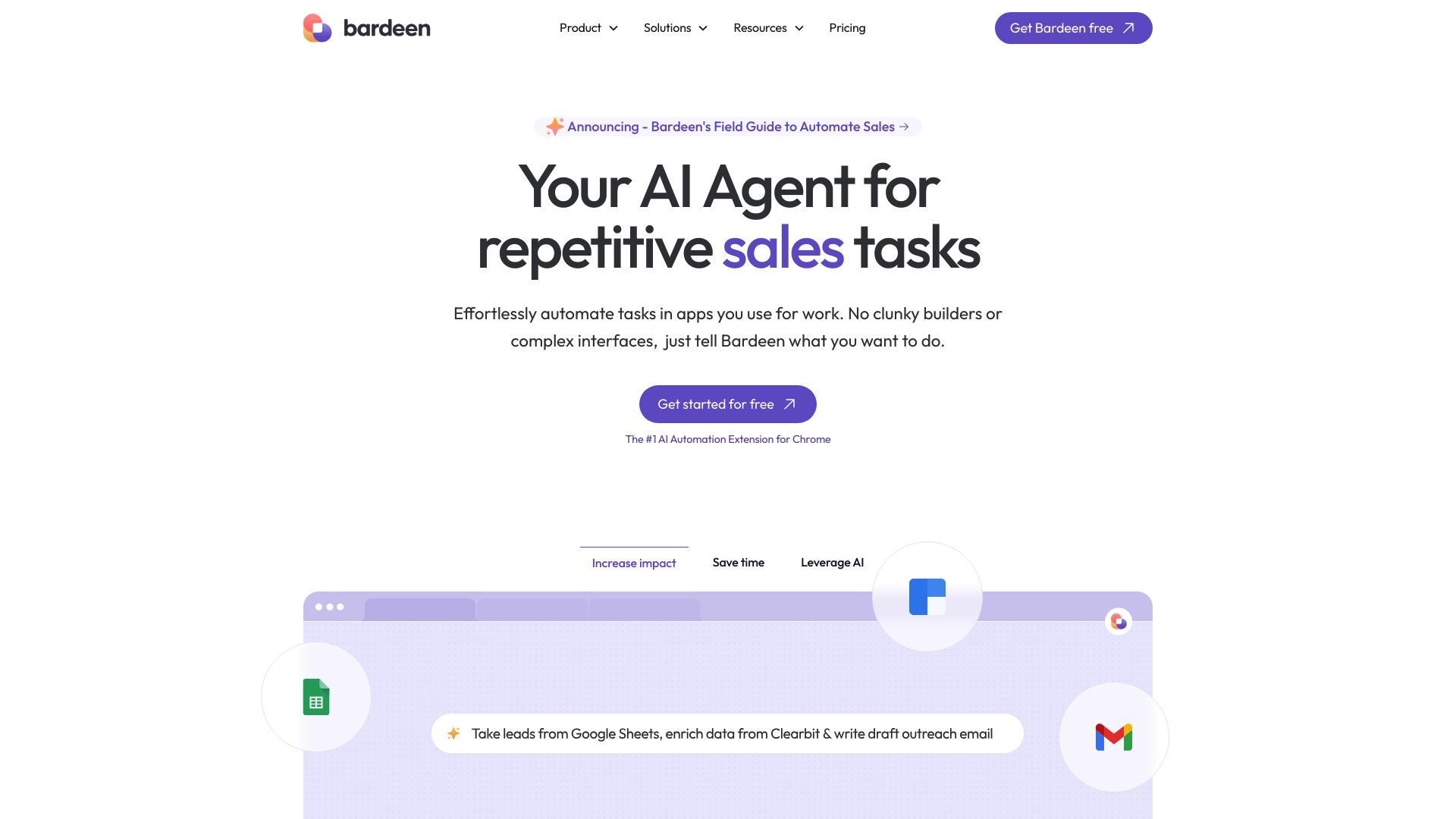BabyAGI vs. Bardeen AI: Comparing AI-Driven Automation Tools
AI-driven automation tools revolutionize task management and workflow optimization. BabyAGI vs. Bardeen AI offer unique approaches to this challenge, each with distinct strengths and limitations. BabyAGI focuses on autonomous task generation and execution using advanced language models, while Bardeen AI provides a no-code web automation platform with a visual workflow builder.
This comparison explores their key features, capabilities, and target audiences, highlighting where each platform excels and falls short. We’ll also introduce SmythOS, a comprehensive solution that addresses the limitations of both platforms, offering enhanced security, scalability, and integration options for businesses seeking cutting-edge AI agent development and deployment.
BabyAGI Overview
BabyAGI leverages advanced AI technologies to create autonomous task management systems. This open-source platform empowers developers to build AI agents capable of generating and executing tasks independently.


BabyAGI integrates OpenAI’s GPT-4 for natural language processing and Pinecone’s vector database for efficient information retrieval. This combination enables the creation of AI agents that understand complex objectives, break them down into manageable tasks, and execute them systematically.
BabyAGI leverages advanced AI technologies to create autonomous task management systems. This open-source platform empowers developers to build AI agents capable of generating and executing tasks independently.
The platform excels in problem-solving scenarios, making it valuable for researchers, developers, and businesses seeking to automate complex workflows. BabyAGI’s autonomous agents can prioritize tasks, maintain context between interactions, and adapt their approach based on previous results.
While BabyAGI offers powerful capabilities, it lacks some features found in more comprehensive AI development platforms. It doesn’t provide a visual builder or no-code options, requiring users to have programming knowledge, particularly in Python. The system also lacks built-in collaboration tools, multimodal support, and advanced debugging features.
BabyAGI’s strength lies in its ability to handle text-based tasks and iterate on problem-solving approaches. However, its local execution model limits scalability for large-scale deployments. The platform integrates well with specific APIs but doesn’t offer broad support for various data sources or deployment options.
For developers and researchers comfortable with coding and seeking a flexible, open-source solution for building autonomous AI agents, BabyAGI provides a solid foundation. Its focus on task generation and execution makes it particularly suited for projects involving complex, multi-step problem-solving in domains where text-based interactions are primary.
Bardeen AI Overview
Bardeen AI offers a no-code web automation platform as a Chrome browser extension. The platform empowers users to automate repetitive web-based tasks through pre-built templates and a visual workflow builder, without requiring coding expertise.


Bardeen’s key features include a drag-and-drop workflow builder for creating automations called Playbooks, a library of pre-built actions and triggers for popular apps like Gmail and LinkedIn, and AI-powered capabilities such as text classification and data extraction. The platform leverages models like GPT-3 to enhance its automation capabilities.
Bardeen’s key features include a drag-and-drop workflow builder for creating automations called Playbooks, a library of pre-built actions and triggers for popular apps… and AI-powered capabilities such as text classification and data extraction.
One standout aspect of Bardeen is its focus on human-in-the-loop interaction. Users can actively engage with automations, validating data, providing inputs, and guiding the process. This approach allows for more personalized and context-aware automations, tailored to specific user needs.
One standout aspect of Bardeen is its focus on human-in-the-loop interaction. Users can actively engage with automations… This approach allows for more personalized and context-aware automations, tailored to specific user needs.
While Bardeen excels in UI-based web automation and offers strengths in visual building and integrations with popular services, it has limitations. The platform lacks capabilities for fully autonomous agents, extensive scalability, and advanced deployment options. Its focus on browser-based robotic process automation (RPA) with human oversight makes it more suitable for use cases where ongoing user participation is feasible, rather than completely hands-off automation scenarios.
Bardeen’s vision centers on democratizing automation by enabling users to build workflows for their repetitive tasks without coding expertise. This aligns with the growing trend of making AI and automation technologies accessible to a broader audience. However, users seeking more complex orchestration or enterprise-wide automation solutions may find Bardeen’s offerings limited in scope.
Feature Comparison
BabyAGI and Bardeen AI offer distinct approaches to AI-driven task automation, each with its own strengths and limitations. BabyAGI excels in autonomous task generation and execution, leveraging advanced language models like GPT-4 for complex problem-solving. Its integration with Pinecone’s vector database enables efficient information retrieval and context maintenance across tasks. However, BabyAGI lacks a visual interface and requires programming knowledge, limiting its accessibility to technical users.
Bardeen AI, in contrast, provides a no-code web automation platform with a user-friendly visual workflow builder. This approach democratizes automation, allowing non-technical users to create sophisticated workflows. Bardeen’s strength lies in its pre-built integrations with popular services and its focus on human-in-the-loop interactions, enabling more personalized automations. However, it falls short in areas of fully autonomous agent capabilities and lacks the deep problem-solving abilities of BabyAGI.
Both platforms have significant gaps in security features and deployment options. Neither offers robust data encryption, IP control, or advanced debugging tools. Additionally, they lack multimodal support and multi-agent collaboration capabilities. SmythOS addresses these gaps by providing a comprehensive suite of security features, including constrained alignment and data encryption, along with versatile deployment options and support for multimodal interactions. SmythOS also offers superior scalability and integration capabilities, making it a more complete solution for enterprises seeking advanced AI agent development and deployment.
| BabyAGI | Bardeen AI | SmythOS | |
|---|---|---|---|
| CORE FEATURES | |||
| Hosted Agents (Dev, Production) | ❌ | ✅ | ✅ |
| Environments (Dev, Production) | ❌ | ✅ | ✅ |
| Visual Builder | ❌ | ✅ | ✅ |
| No-Code Options | ❌ | ✅ | ✅ |
| Memory & Context | ✅ | ❌ | ✅ |
| Autonomous Agents | ✅ | ❌ | ✅ |
| Explainability & Transparency | ❌ | ✅ | ✅ |
| Debug Tools | ❌ | ❌ | ✅ |
| Multimodal | ❌ | ❌ | ✅ |
| Problem-Solving Capabilities | ✅ | ❌ | ✅ |
| Multi-Agent Collaboration | ❌ | ❌ | ✅ |
| Audit Logs for Analytics | ❌ | ❌ | ✅ |
| Work as Team | ❌ | ✅ | ✅ |
| Bulk Work | ❌ | ✅ | ✅ |
| Agent Work Scheduler | ❌ | ✅ | ✅ |
| Logs & Monitoring | ❌ | ✅ | ✅ |
| SECURITY | |||
| Constrained Alignment | ❌ | ❌ | ✅ |
| Data Encryption | ❌ | ✅ | ✅ |
| OAuth | ❌ | ✅ | ✅ |
| IP Control | ❌ | ❌ | ✅ |
| COMPONENTS | |||
| Foundation AIs | ✅ | ❌ | ✅ |
| Huggingface AIs | ❌ | ❌ | ✅ |
| Zapier APIs | ❌ | ❌ | ✅ |
| All other APIs, RPA | ❌ | ✅ | ✅ |
| Classifiers | ❌ | ✅ | ✅ |
| Logic | ❌ | ❌ | ✅ |
| Data Lakes | ❌ | ❌ | ✅ |
| DEPLOYMENT OPTIONS (EMBODIMENTS) | |||
| Deploy as API | ❌ | ❌ | ✅ |
| Deploy as Webhook | ❌ | ❌ | ✅ |
| Staging Domains | ❌ | ❌ | ✅ |
| Production Domains | ❌ | ❌ | ✅ |
| API Authentication (OAuth + Key) | ❌ | ❌ | ✅ |
| Deploy as Site Chat | ❌ | ❌ | ✅ |
| Deploy as Scheduled Agent | ❌ | ✅ | ✅ |
| Deploy as GPT | ❌ | ❌ | ✅ |
| Scalability | ❌ | ✅ | ✅ |
| DATA LAKE SUPPORT | |||
| Hosted Vector Database | ✅ | ❌ | ✅ |
| Sitemap Crawler | ❌ | ❌ | ✅ |
| YouTube Transcript Crawler | ❌ | ✅ | ✅ |
| URL Crawler | ❌ | ❌ | ✅ |
| Word File Support | ✅ | ❌ | ✅ |
| TXT File Support | ✅ | ❌ | ✅ |
Best Alternative
SmythOS outperforms BabyAGI and Bardeen AI as a comprehensive AI automation platform. Our solution combines autonomous agent capabilities with an intuitive visual interface, providing unmatched versatility for businesses of all sizes. SmythOS offers a full-featured ecosystem for developing and deploying sophisticated AI agents across multiple use cases, bridging the gap between technical complexity and user-friendly design.
With robust security features, including data encryption and OAuth, SmythOS ensures protection of sensitive information. The platform provides unparalleled deployment flexibility, allowing seamless integration of AI agents into existing workflows as APIs, webhooks, scheduled tasks, or chat interfaces. SmythOS’s no-code visual builder empowers both technical and non-technical users to create powerful AI solutions without extensive programming knowledge.
Our multi-agent collaboration and problem-solving abilities surpass the limited scope of competitors’ offerings. With enterprise-grade scalability and integration options, SmythOS supports a wide array of AI models, APIs, and data sources, enabling truly customized solutions for unique business needs. Whether automating complex processes, enhancing customer interactions, or developing cutting-edge AI applications, SmythOS provides the tools and flexibility to efficiently and effectively bring your vision to life.
SmythOS offers a full-featured ecosystem for developing and deploying sophisticated AI agents across multiple use cases, bridging the gap between technical complexity and user-friendly design.
Conclusion
BabyAGI and Bardeen AI offer distinct approaches to AI-driven automation. BabyAGI excels in autonomous task generation and execution, leveraging advanced language models for complex problem-solving. However, its technical nature limits accessibility to developers and researchers. Bardeen AI, with its no-code platform and visual workflow builder, democratizes web automation for non-technical users, but lacks the depth of autonomous capabilities and scalability needed for enterprise-wide solutions.
SmythOS emerges as the superior choice, addressing the limitations of both platforms. Our comprehensive suite of features includes robust security measures, versatile deployment options, and support for multimodal interactions. We offer the best of both worlds – the power of autonomous AI agents and the accessibility of a no-code interface. Our platform scales effortlessly from individual projects to enterprise-wide implementations, making it ideal for businesses of all sizes.
The SmythOS drag-and-drop interface, combined with our extensive integration ecosystem, empowers users to create sophisticated AI workflows without extensive coding knowledge. Our multi-agent orchestration capabilities and versatile deployment options ensure that AI solutions seamlessly integrate into existing systems, driving innovation across industries.
Ready to experience the future of AI automation? Create a free SmythOS account today and discover how our platform can transform your workflows, boost efficiency, and unlock new possibilities for your business. Don’t just automate – innovate with SmythOS.
Last updated:
Disclaimer: The information presented in this article is for general informational purposes only and is provided as is. While we strive to keep the content up-to-date and accurate, we make no representations or warranties of any kind, express or implied, about the completeness, accuracy, reliability, suitability, or availability of the information contained in this article.
Any reliance you place on such information is strictly at your own risk. We reserve the right to make additions, deletions, or modifications to the contents of this article at any time without prior notice.
In no event will we be liable for any loss or damage including without limitation, indirect or consequential loss or damage, or any loss or damage whatsoever arising from loss of data, profits, or any other loss not specified herein arising out of, or in connection with, the use of this article.
Despite our best efforts, this article may contain oversights, errors, or omissions. If you notice any inaccuracies or have concerns about the content, please report them through our content feedback form. Your input helps us maintain the quality and reliability of our information.
